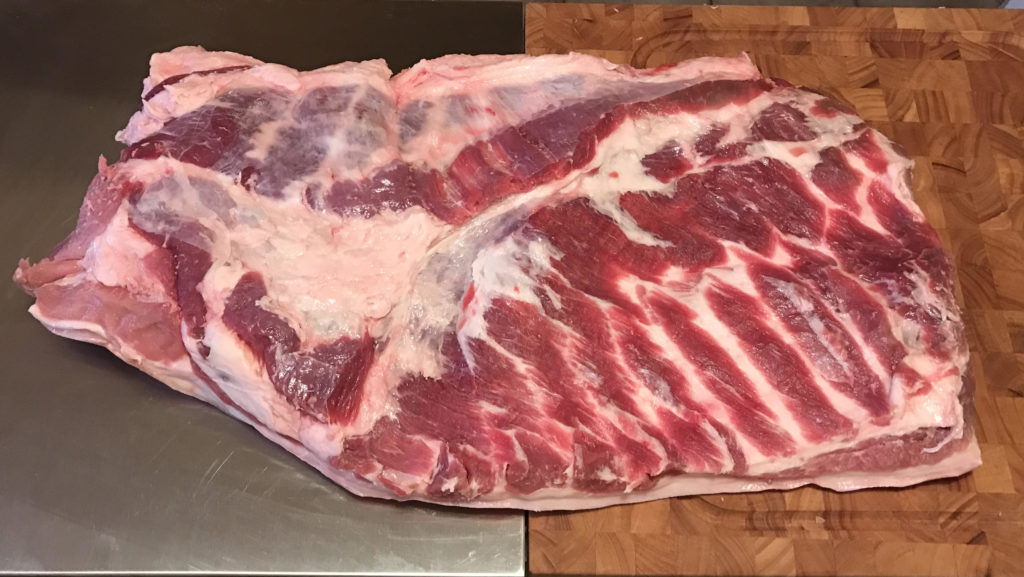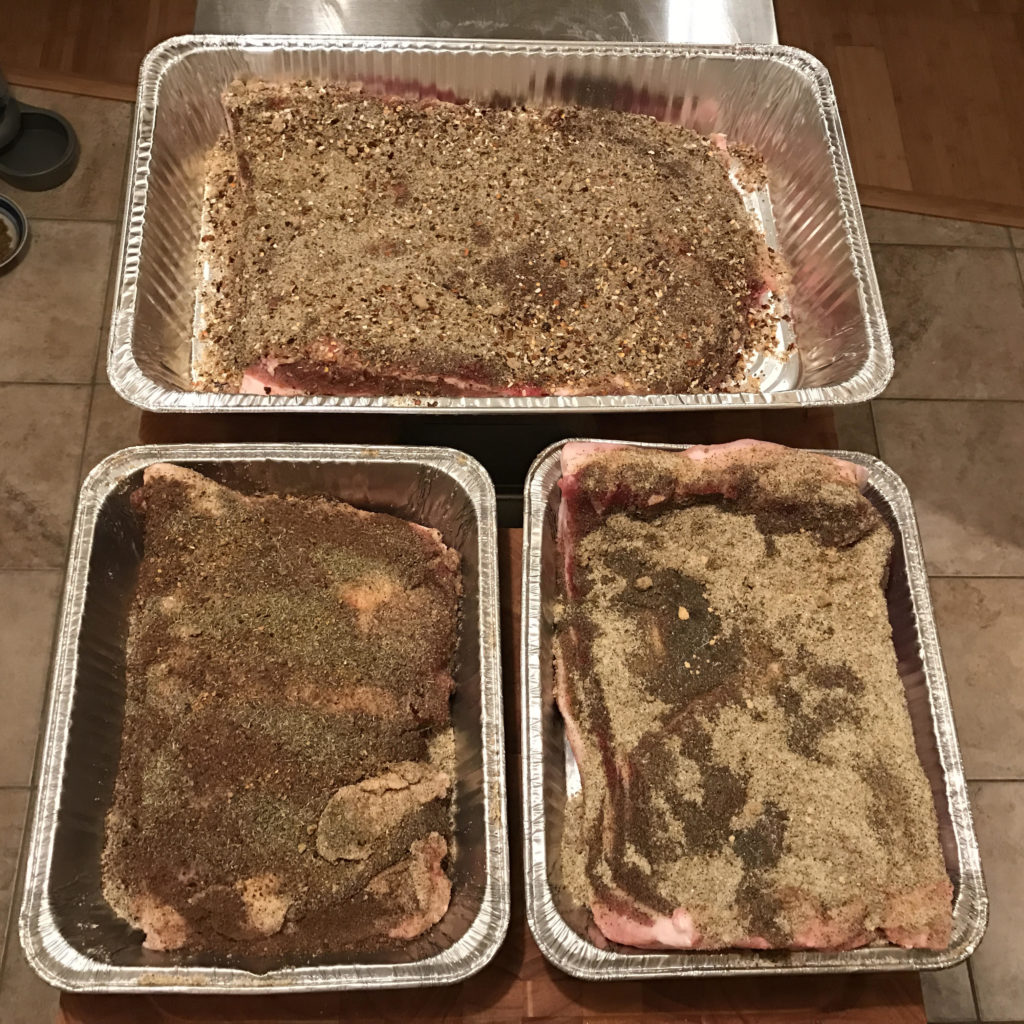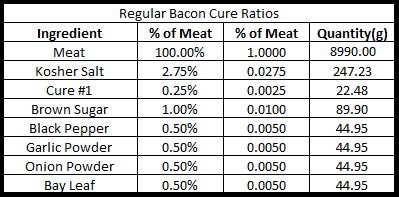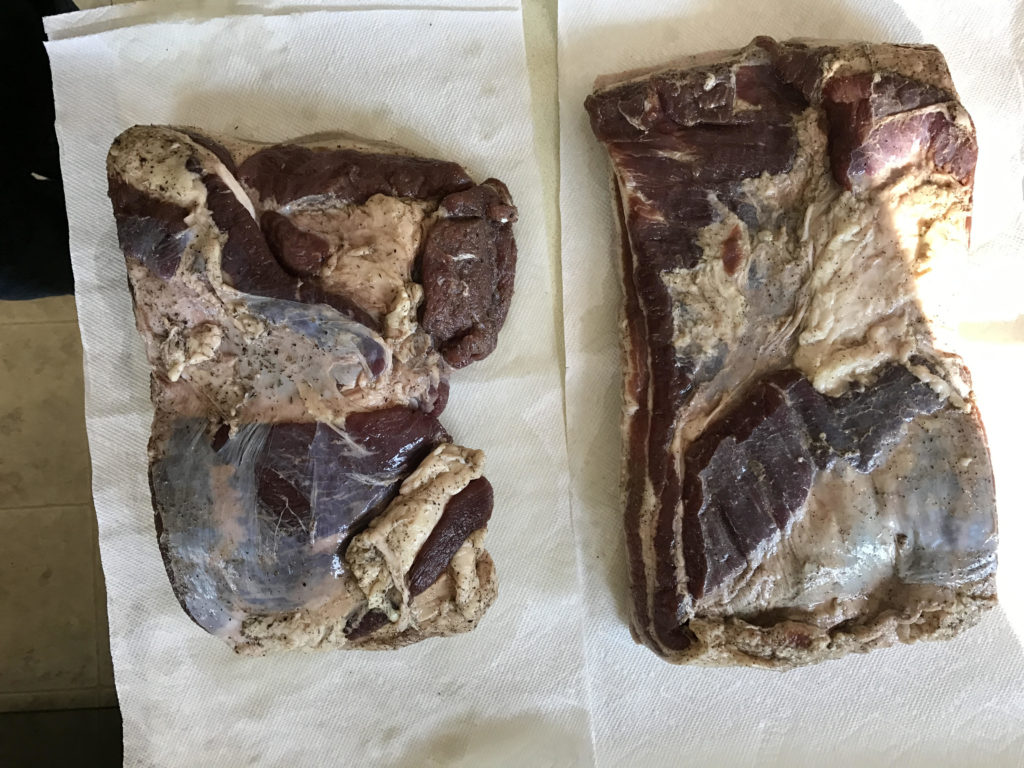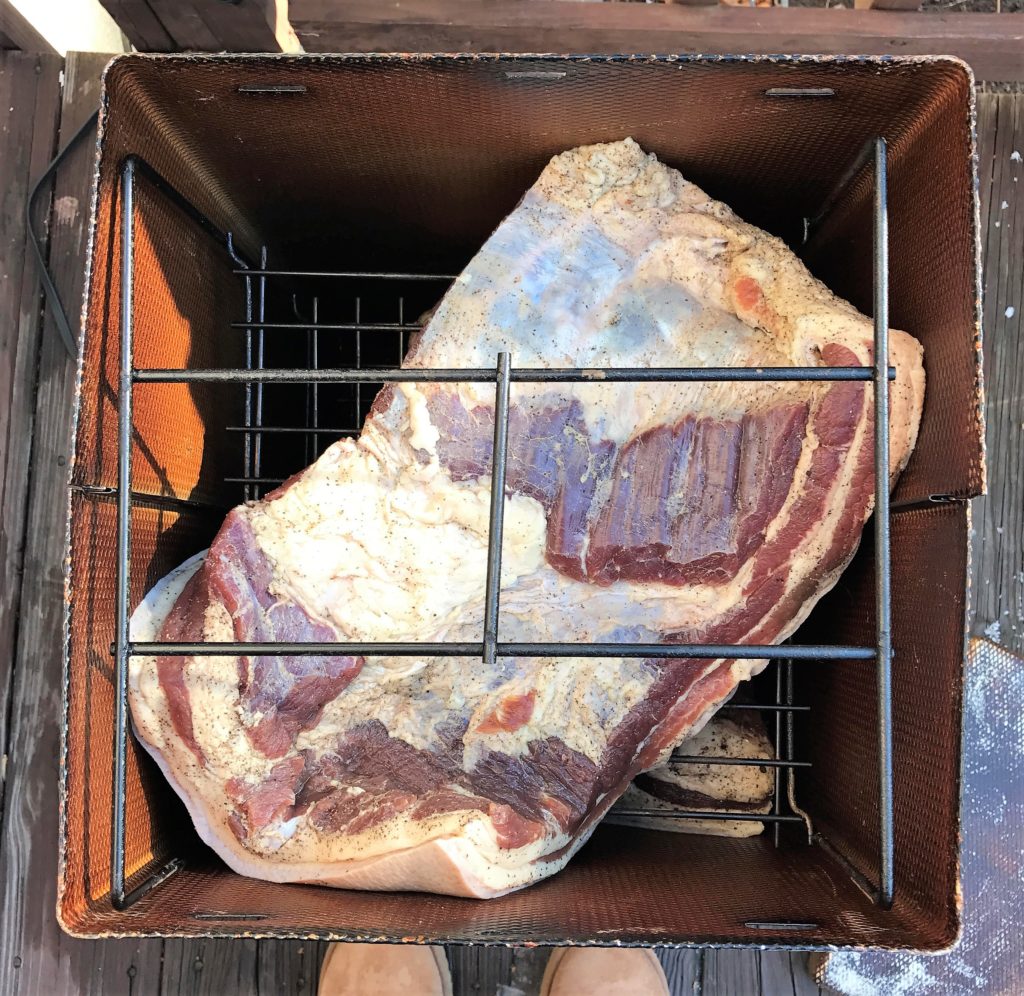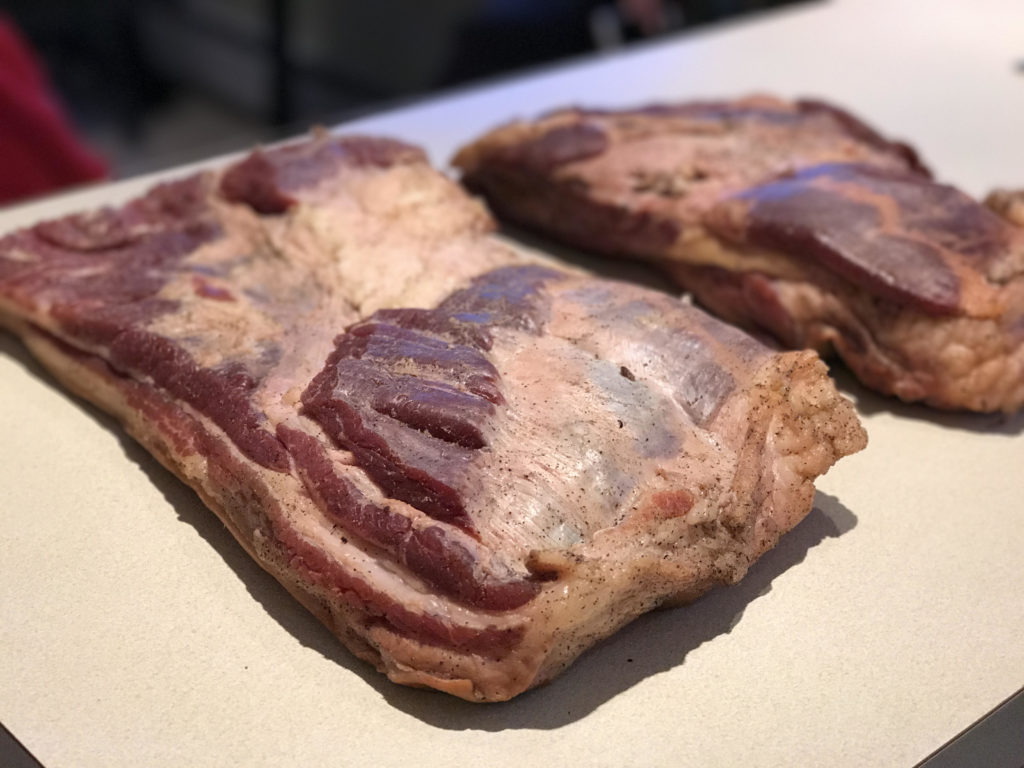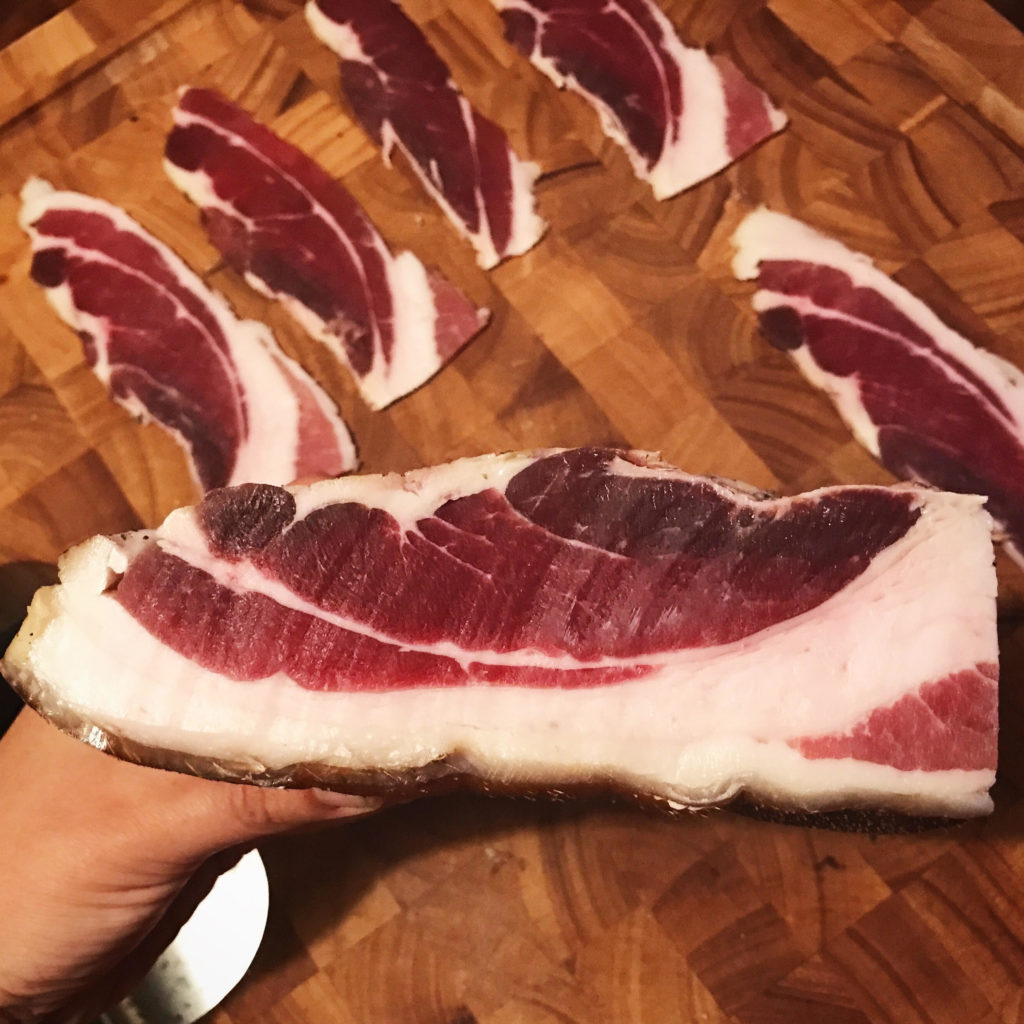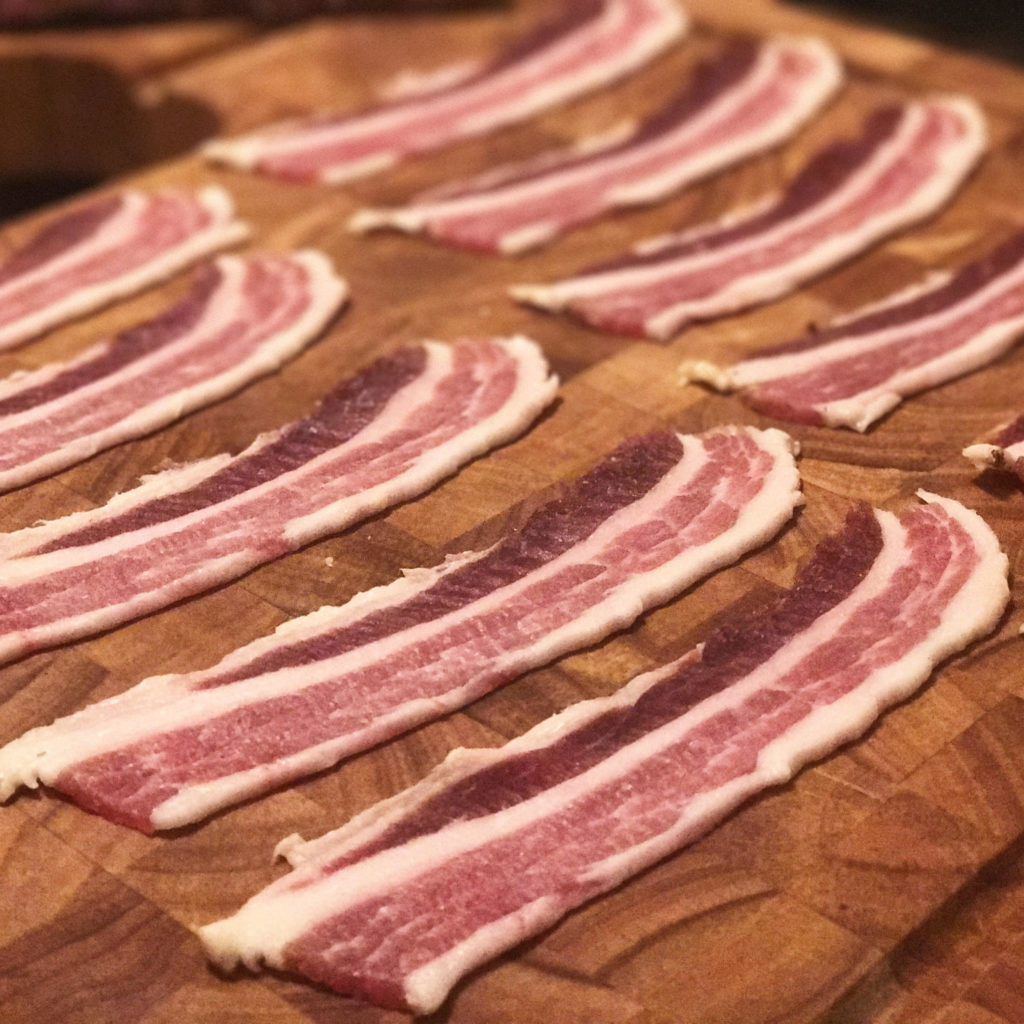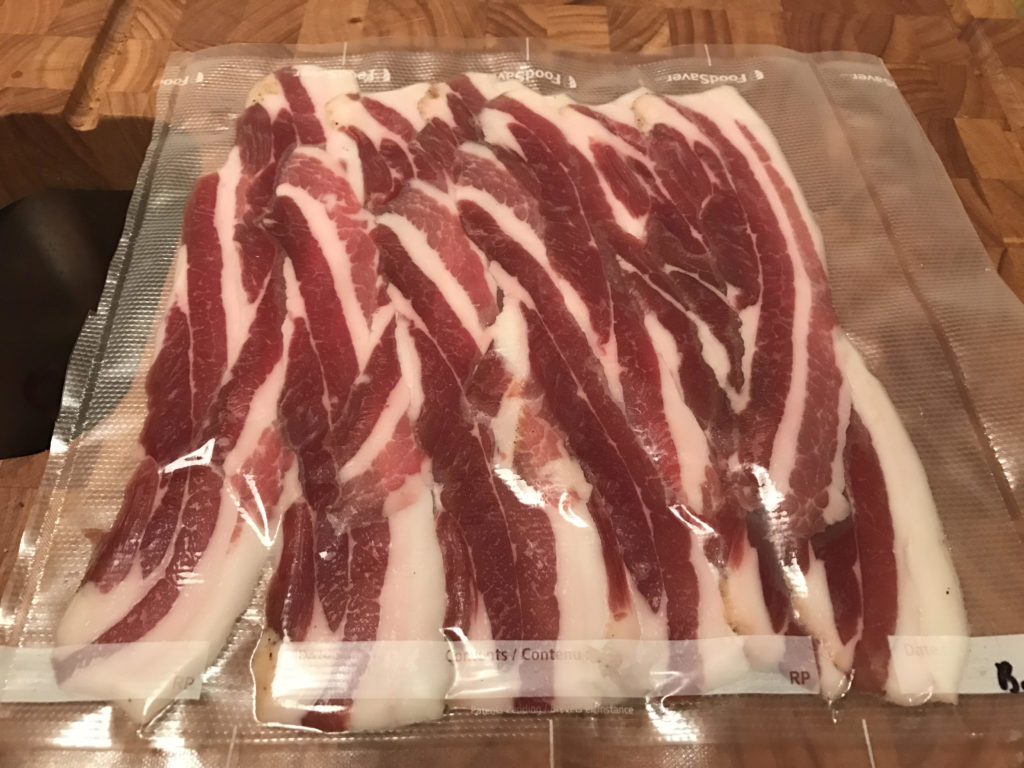Everybody loves bacon these days. Bacon is as hip and cool as mustaches and kale apparently are. There is bacon in Bloody Mary’s, bacon flavored chap-stick, even bacon made wallets. Now, I am all for the propagation of bacon love, but I do have a serious bone to pick with what a lot of these so called bacon lovers are eating; cardboard, bone-dry, lean strips of brown meat with a thin strip of fat. Sad, pathetic, little bacon strips. Not all pork belly is born equal, and not all bacon is the same. I believe that if you’re going to eat something as delicious and maybe not so healthy for you as bacon, you should do it in moderation, and go all in, eating the best, most delicious bacon you can get your hands on. And let’s face facts folks; well-smoked, thick cut, meaty flavor, marbled bacon is rare. And that’s why I’m writing this, and presumably, why you’re here. Making your own bacon is one way to make sure that you are really getting all the enjoyment that you can out of that sodium/fat bullet to your heart. Here, I will discuss my process of making bacon. One of the most important aspects of any meat curing process is obtaining good quality meat from animals that have been raised well. I was fortunate enough to pick up this meat from Ham Sweet Farm, a farm that is committed to raising quality, happy animals. The proof is in the bacon.
Curing (2+ weeks):
The first step is to take a pork belly and cure it in a cure mixture of salt and spices. A lot of people use excess curing for bacon, but I really suggest using equilibrium curing. It results in a much more controlled end product and allows for life to get in the way with no adverse effect on your product. Depending on the thickness of your bacon, it can usually take around 1-3 weeks for the cure to penetrate the meat. I usually put my meat in vacuum sealed bag with the cure in the fridge during this part of the process. There are no downsides to leaving the meat in the cure for a bit longer when you use an equilibrium cure, which is good for me, because I left this meat in the cure for almost 2 months.
I used two different cures for this bacon, a more traditional bacon cure and a maple syrup cure.
Smoking (4+hours)
After the pork belly has been in the cure for an appropriate amount of time, it’s time to smoke it. Some people hot smoke bacon, but I feel like that really ruins the complex flavors you can create in bacon, so I cold smoke my bacon. In cold smoking, you aim to keep the temperature below 90F/32C. This allows for the meat to take on a smoked flavor, without the meat actually cooking.
First, take the pork belly out of the cure, rinse it off in cold water, and dry it off.
Then, place it in a cold smoking set up.
You can leave it in the smoke for as long as you would like, depending on your flavor preferences. I like the 4-5 hour time span, which allows for a nice complex smoky flavor without being too overpowering.
Equalizing (Overnight):
After the pork belly has been smoked, it is now bacon! However, if you try to slice it and eat it right away, you may find that it isn’t exactly to your taste. You’ll want to let it rest and equalize overnight in the refrigerator so that the smoke flavor can spread throughout the meat.
The next day, you can take the bacon out of the fridge and start to fry it up!
After tasting some, I generally move the whole piece of bacon to the freezer and let it freeze, before using a meat slicer to thick slice it into pieces.
These are then stored in a vacuum sealed bag in the freezer. Great for Sunday morning breakfasts or gifts for family and friends!
Disclaimer: Meat curing is a hobby that comes with inherent risks. We can all do things to limit this risk by educating ourselves about the process and the utilizing the safest known methods to create our products. This website is for educational purposes only, and all experimentation should be done at each individuals own risk.
